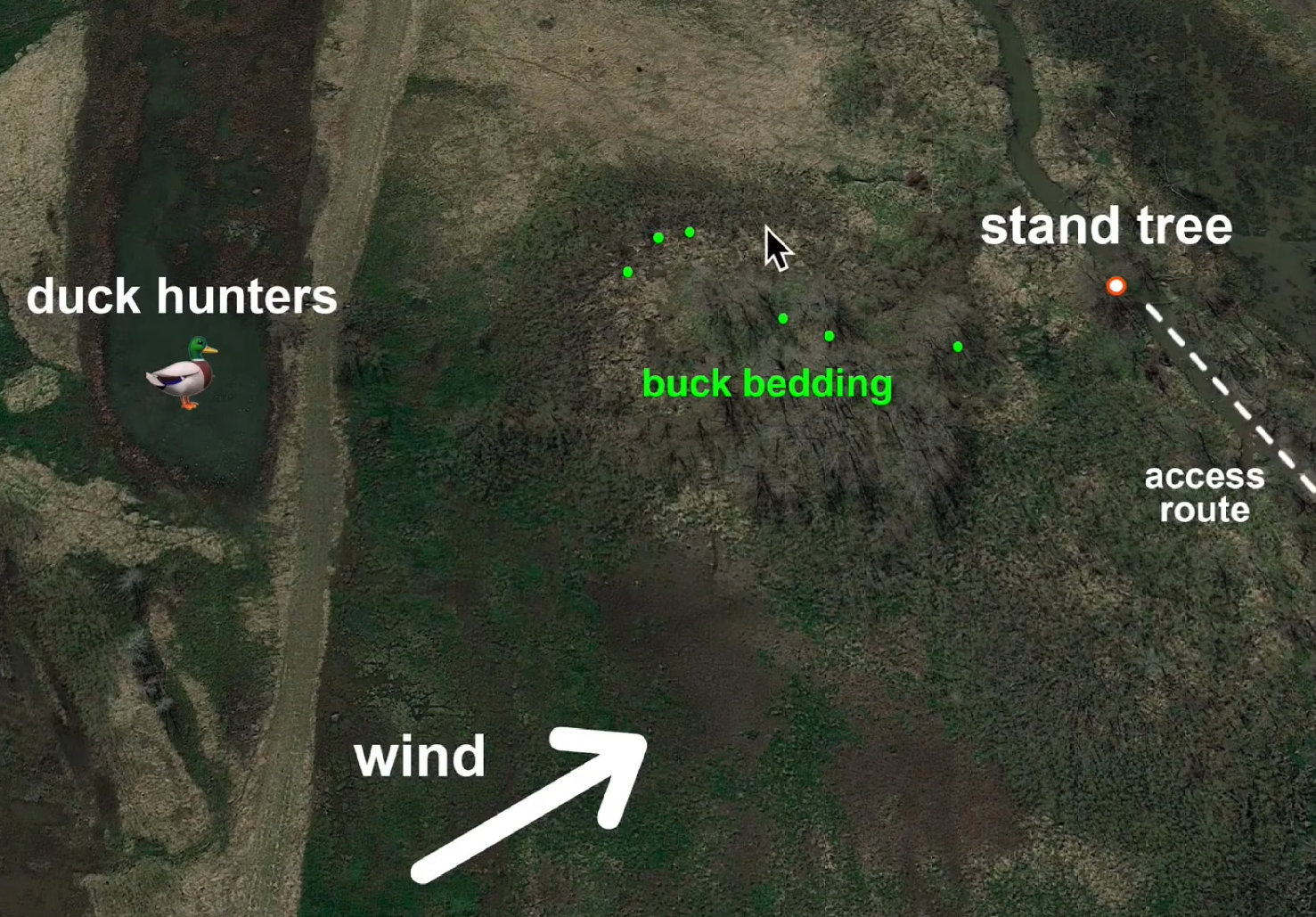Is the risk worth the reward? When it comes to hunting and targeting buck bedding areas that’s one question we have to ask ourselves every time we decide where to sit. How close is too close? And can I get away with it? Undoubtedly, there are certainly times to place to play it safe, but NOT always. In order to harvest mature bucks on a consistent basis, there will be times you need to be aggressive – especially on public land.
Let’s face it, understanding bedding areas and habits is tough. Even some of the most experienced hunters still mess up or bump bucks, but with that, many of them learn a lot. And as the great Dan Infalt himself even says, if you’re not bumping bucks and swearing at yourself on occasion, then you’re not getting close enough. Of course, the first step to successfully identifying bedding areas is to find them. Once you find them, you’ll need to understand why and when deer prefer them. In the video below, Aaron Warbritton from The Hunting Public breaks down exactly what they look for and how they hunt specific buck beds and bedding areas.
Finding Buck Bedding Areas
The Hunting Public dives into much more detail in this video podcast about how to find buck beds using aerial maps and how they then hunt them, but in general, there are a few key things to look for:
- Wooded islands or peninsulas scattered in swamps and cattail marshes
- Feeder ridge points in hill country
- Thick edges in flat ag areas
- River meanders
- Interior edges in big woods country
- Transition lines (everywhere)
 Here’s a prime example of a hunting setup near buck bedding with undetectable access via the creek. Watch Aaron pass a buck from this stand.
Here’s a prime example of a hunting setup near buck bedding with undetectable access via the creek. Watch Aaron pass a buck from this stand.
Once you find probable bedding areas on a map, you’ll have to spend some time scouting them from the ground. If you’re scouting during the summer it’s important to think about where deer will be bedded in the fall based upon where the cover allows them to be. Throughout the summer, cover is everywhere and bucks will absolutely bed in different areas than the fall, especially since hunting pressure is near non-existent. If you come across beds, pay attention to how far you are from potential hunting pressure and adjust accordingly. Often, as the greenery from summer dies off and weeps to the forest floor, deer and bucks specifically will seek out woody vegetation or anything that’s at least 3 feet tall to keep them concealed when they are bedded. In short, the mature bucks will be wherever the cover allows them to be.
When You Find a Buck Bed
A mature buck bed will often be worn flat, have several spoke-like exit trails, and may even have a rubbed tree on the edge of it. If you find this, mark it on your OnX map and get ready to dissect it in all of its glory. By dissecting it, I don’t mean tear the bed apart, but rather get inside it and see what a deer sees. Raise up over the cover and picture which areas the buck might be able to cover with their eyes and nose. Bucks almost always bed with the wind to their back so they can smell what’s behind them and see what’s in front of them. In most cases, this means the higher and/or thicker cover is behind them and the lower more open area is out in front. The portion they can see is what Aaron refers to as their safe zone and deer will almost never leave that during daylight. Want a crack at that buck before the rut? Then it’s your job to get inside that bubble undetected.
How to Hunt Buck Beds
Alright, it’s time to put all the pieces of the puzzle you got from scouting together and lock in a game plan on how you can get close to that bedded buck. When hunting bedding areas, The Hunting Public relies fully on observation sits before making a killer move in close. You can learn more about observation sits here, but in short, you set up from a safe distance to see exactly where/which beds a buck(s) might be using, what time he got up, and where he traveled to. This is especially effective during the early season when patterns are still largely reliant on food and bedding. Hopefully, you’ll spot a buck you want to pursue, and be able to move in super tight in the coming days. Just remember, conditions must be perfect, along with your access and setup. Remember those notes you took while sitting in the actual deer bed during the summer?? This is where the scouting and marking of waypoints comes full circle. Don’t have these and you’re likely going to bust him.
Hunting buck beds is tricky business, but it’s a lot less tricky if you scout and prepare well before deer season opens. In the end, it all comes back to access and execution.









